13 Hidden Horror Movie Gems to Help You Survive the Annual January/February Cinematic Dumping Ground
Obscure Classics, Indie Curiosities, and Gory Glories to Tide You Over Through the Winter Months
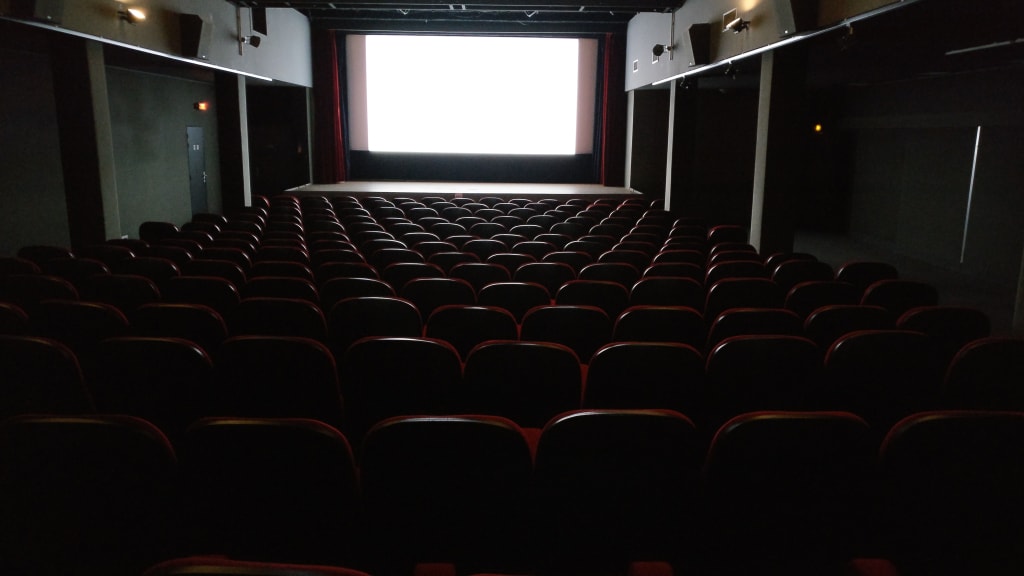
In recent years, the month of January has become synonymous with the widespread dreaded expectation of the major movie studios releasing their cheapest off-cuts, and likeliest critical duds, to die a quick death in the cinematic dumping ground that is the awkward winter period of post-Christmas/early-New Year/start-of-awards-season chaos.
Hell, thanks to Red Letter Media, we even have a name and a meme for this infuriating phenomenon:
But really, this period of egregious filmic turgidness truly covers both January and February, because consider this:
In 2017, January treated us to Underworld: Blood Wars (the fifth film in a franchise I don't think even the studio remembers they're still making), Monster Trucks (a film whose main idea was literally conceived by a four year-old), The Bye-Bye Man (a waste of a perfectly good Doug Jones [the prolific monster character actor, not the guy who beat Roy Moore]), and Resident Evil: The Final Chapter (a blessed relief to video game fans everywhere), while February added salt to the wounds with Rings (which should have been thrown into the fires of Mount Doom), and Fifty Shades Darker (about as sexy as a carbuncle).
In 2016, January served up The Forest (now the least disrespectful thing to have been made by some Americans about Japan's Aokigahara Forest, thanks to the existence of Logan Paul), Norm of the North (it's a Rob Schneider movie; we should expect nothing less), The 5th Wave (another YA franchise adaptation we can wave goodbye to),The Boy (there's a dude in the walls; that's it), Dirty Grandpa (De Niro's trolling us by this point), and Fifty Shades of Black (just consider the words "fifty shades" to curse anything they're attached to), before February scooted over to kick audiences in the shins with Gods of Egypt (starring Gerard "Shut-Up Buttwad" Butler as a white Scottish Egyptian god), and Sacha Baron Cohen's (ahem) elephantine failure of Grimsby (or The Brothers Grimsby, depending on your geography).
And 2015? January delivered The Wedding Ringer (gay panic equals automatic comedy, right?), Mortdecai (almost the worst thing we know Johnny Depp has ever done), The Boy Next Door (J-Lo finds new low), Jupiter Ascending (bless you for trying, Lilly and Lana), and The Loft (a... loft-y failure, if you will), followed by February's sucker punches of Accidental Love (seemingly the only thing David O. Russell is ashamed about), Hot Tub Time Machine 2 (no Cusack? no thanks), The Lazarus Effect (sadly, not a sequel to Tropic Thunder), and — oh, surprise, surprise — Fifty Shades of Grey (about as sexy as Twilight fan-fiction... oh, wait).
There's Got to Be a Better Way!!
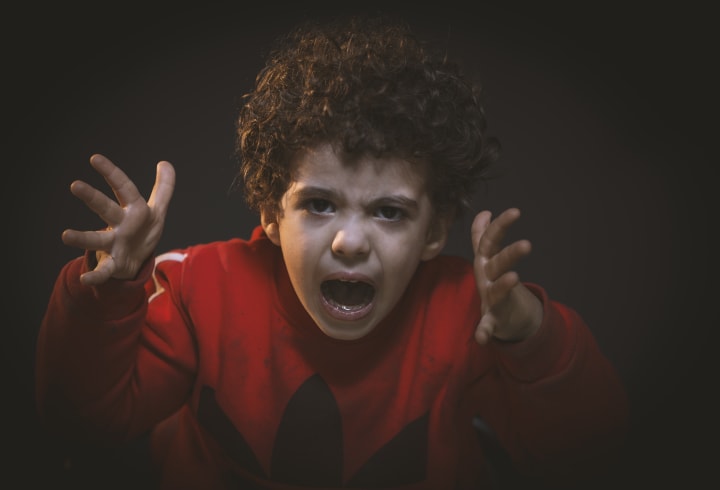
Photo by Mohamed Taher on Pexels
Now, of course, to be fair and balanced about this whole thing, there are couple of addendums to note forthwith:
A) This January/February movie graveyard phenomenon is kind of mostly an America-centric occurrence, considering that in the UK (which is where this humble writer resides), the awards contenders that typically get US releases through November and December (to apply for Oscar consideration), more often than not wind up appearing in the UK the following January and February, so to us Brits, the January and February experience is practically the exact opposite of Cinematic Graveyardism.
B) Horror movies aren't particularly more or less abundant than any other genres of movies released in any given month.
And:
C) Cinematic Graveyardism is, logically and objectively, a total fallacy. Studying any given year's list of film releases on a month-by-month basis, there's no real pattern or month-based preference for when good movies and/or bad movies come out. For every Mortdecai, there's an Ex Machina. For every Grimsby, there's a Zootopia (or Zootropolis, depending on your geography). And for every Fifty Shades Darker, there's a freakin' Get Out.
Sooooooo...
...why even compose this list in the first place, I hear you (the hypothetical reader) ask?
Because these cold, wet, snowy, bitterly windy months of late winter/early spring feel appropriate a time as any to sink your teeth into stories of the spooky and the macabre, in keeping with the melancholy mood of the season. (Probably another reason why these opening months are associated so frequently with [usually shitty] horror movies, and why they're released by the studios around this time.)
And also, the internet is built on lists, lies, and hyperbole, so I'm just adding to the foundations.
Plus, if I've properly fulfilled my initial promise of recommending 13 horror movies to you that I reckon deserve to be lavished with more attention and appreciation, then hopefully, you'll wind up having seen some flicks you perhaps hadn't heard of before, and perhaps even behold some new all-time favourites (if we're really lucky).
So, come with me, and we'll be in a world of pure (terrifying) imagination.
Take my hand. We'll make it, I swear...
=)
1) 'Darling'
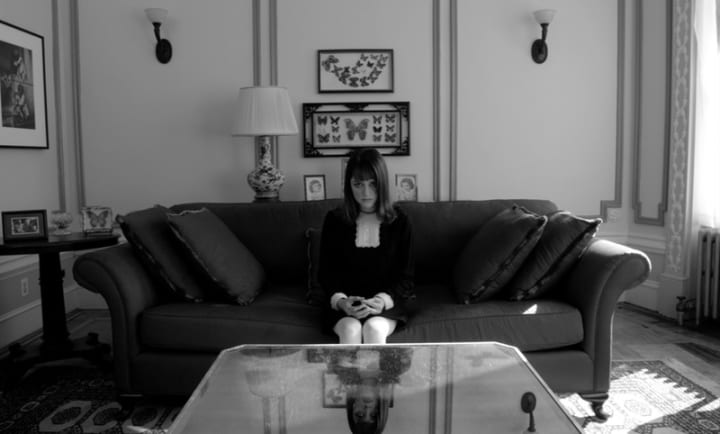
Photo by Glass Eye Pix
Set in a New York that seems removed from any discernibly specific time period, and shot in gloomy monochrome, Mickey Keating's Darling opens (after a fair warning that "this film contains flashing lights and hallucinatory images") with a short atmospheric prologue that plays like a sinister cousin to the opening sequence of Woody Allen's Manhattan, before proceeding, chapter by chapter, through an increasingly intense and unnerving tale of a young woman's slow descent into pure, unhinged madness, caused by... maybe an unseen malevolent force?... or perhaps her own damaged psyche?... the answer remains ambiguous, left only determinable by whatever conclusion feels most likely to each viewer.
Keating's measured direction, crossed with the skin-crawling sound design, and psychedelic bad-acid-trip editing, creates a rich atmosphere of toxic unease, bolstered tremendously by Giona Ostinelli's nerve-jangling score, and a barn-stormingly ferocious and petrifying lead performance from Lauren Ashley Carter, who — as the only actor on-screen for about 75% of the film's fleet 78-minute running time — effortlessly carries Darling from beginning to end.
It's certainly a very style-over-substance sort of horror movie, but when the style is the substance, and it works as well as it does herein, it's hard to complain.
(SIDE NOTE: Apparently, Darling is heavily inspired by Roman Polanski's Repulsion. However, I didn't make reference to it above, because I haven't seen that film, because I have no wish to, because Polanski can go fuck himself. [And, on a related note, so can Woody Allen, as well.])
2) 'Excision'
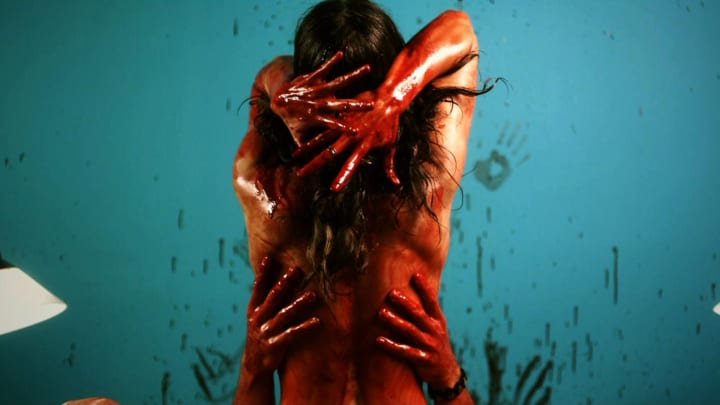
Photo from We Eat Films
A potently queasy mixture of gruesome body horror, coming-of-age drama, Greek tragedy, and pitch black comedy, Richard Bates Jr.'s Excision will forever stick in your mind, whether you want it to or not.
The story of Excision concerns the corrosive effects and consequences of emotional and religious repression, with AnnaLynne McCord's main character being the prism through whom we see the negative repercussions.
Bates Jr. uses his casting of certain figures of authority to sly, satirical effect here, as a way of highlighting the absurdity of repressing some of the most basic of human thoughts and desires, and pretending they don't exist.
This extends to the casting of Traci Lords — a former adult film star — as a overzealously devout religious conservative... or having the family's priest/amateur psychotherapist be played by The Pope of Trash himself, John Waters (pencil moustache and all)... or having McCord's strictest teacher being played by Malcolm "Clockwork Orange" McDowell, and the school principle be played by Ray "Leland Palmer/BOB/Satan" Wise.
You get the idea.
By film's end, you come away with the feeling that Bates Jr. is saying something about how minimising a child's beliefs and ambitions, proclaiming thoughts and feelings about sex to be sinful and wrong, and refusing to confront the idea of death and the necessity of grief (symbolised by McCord's sister — played by Ariel Winter — having a serious illness that colours a lot of the mother and daughter motivations and decisions throughout the film, providing a humanising anchor in the centre of the maelstrom of depravity the movie throws at us), altogether can backfire disastrously, leading to — in McCord's character's case — the usually-perfectly-natural human feelings about sex and death becoming inextricably intertwined, mutating into a horrific hybrid that distorts the realities of both into a single disturbing, malignant belief system, and worldview.
McCord is a force to be reckoned with her extraordinarily dedicated performance herein, that is by turns hilarious and terrifying, sometimes all at once. But the surprise standout among the cast turns out to be Traci Lords, as McCord's overbearing and psychologically abusive mother, who ultimately proves to be the most poignantly devastating part of the entire film. (Her final screams will haunt your dreams...)
3) 'Grave Encounters'
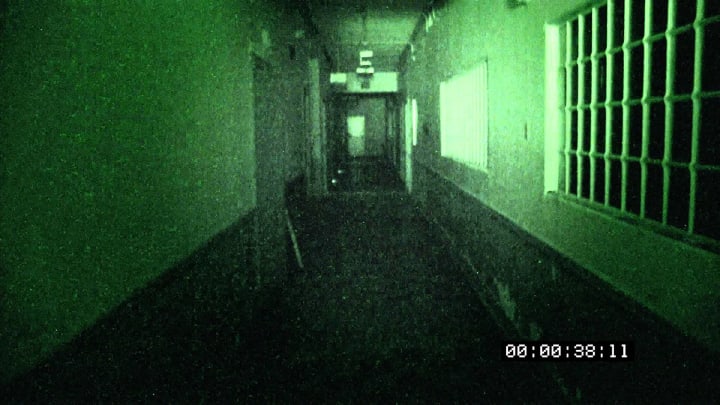
Photo from IMDb
There are very few found-footage movies that are worth your time and attention; even fewer are there genuinely excellent found-footage movies that you find yourself thinking back on again and again, long after you first watched it.
But in my opinion, Grave Encounters is one of those exceptional few.
It starts off as a enjoyably incisive satire of purportedly "real" ghost-hunting "reality" shows, where the makers of the programme don't actually believe in the supernatural, but pretend that they do for the camera, and go so far as to pay people to lie about having had ghostly experiences, and even hiring an actor to pretend to be their go-to psychic medium.
(Though it's worth noting that, as much as the film plays up the ridiculousness of this reality show charade, they somehow still come nowhere near as close to being as credulity-strainingly preposterous as actual paranormal reality shows that are in existence. [I'm looking at you, Zach Baggins, and your gang of bro-verblown bros from Ghost Adventures.])
Inevitably, though, because this is a found-footage movie, things start going very, very wrong indeed for the Grave Encounters crew.
And, luckily for us, the scary happenings are actually properly scary for once!
The film juuuust believably enough side-steps the usual "WHY DON'T THEY PUT DOWN THE CAMERA??!?!??" flaw of the genre, thanks to an abundance of CCTV cameras, the fact that they're shooting footage for a reality show, and — eventually — continuing to talk to the camera as a way to keep their sanity.
Without spoiling anything, one of the biggest reasons I like Grave Encounters so much is that a part of the overarching menace in the plot stems from a twisting of reality that is somewhat reminiscent of Mark Z. Danielewski's House of Leaves — and trust me, whenever something does anything to remind me of the sheer mind-fuckery horror of that book, they're doing something right...
4) 'Dans Ma Peau' (a.k.a. 'In My Skin')
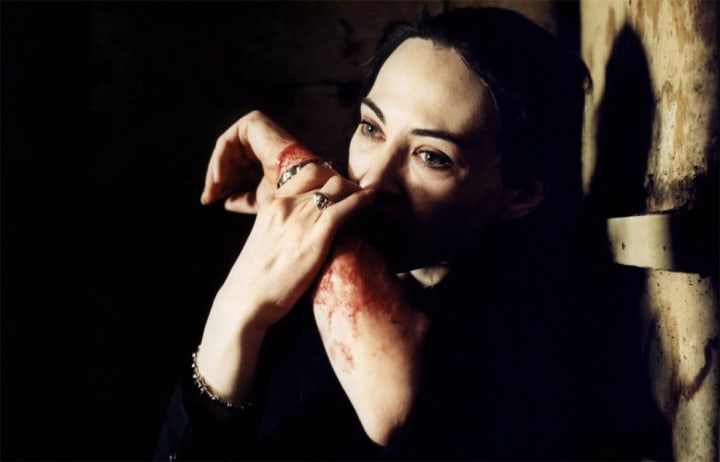
Photo from IMDb
Written by, directed by, and starring Marina de Van, In My Skin is a four-word sentence that should strike an immediate spark of fear into the hearts of horror movie lovers everywhere; and that four-word sentence is:
A French horror movie.
Oh, yeah. Be afraid. Be very afraid.
Now, to be fair, this isn't exactly a film that I'd necessarily consider to be part of the New French Extremity movement (though Wikipedia would beg to differ), because it's a lot more subdued and psychologically disturbing than the more viscerally gory splatterfests of Switchblade Romance, or Frontiere(s), or what have you.
Nevertheless, the very concept of de Van's film is enough to send a chill up your spine just thinking about it, which goes a long way to aiding in the film's impact.
In My Skin is about a businesswoman who, at a party one night, accidentally injures herself, but only discovers it once someone else points out that she's bleeding. This puzzling lack of pain and sensation leads her on to a grotesque voyage of self-discovery, as she starts to cut and harm herself in increasingly dramatic and bloody ways.
But whatever you might expect to happen with a plot such as that, de Van most assuredly has other ideas in store, using this body-horror conceit as a way to explore themes of societal alienation, disassociation, body dysmorphia, and cultural indifference in the face of capitalistic greed.
(Don't worry — it's also vomit-bag-necessitatingly gory as fuck, too...)
5) 'À l'intérieur' (a.k.a. 'Inside')
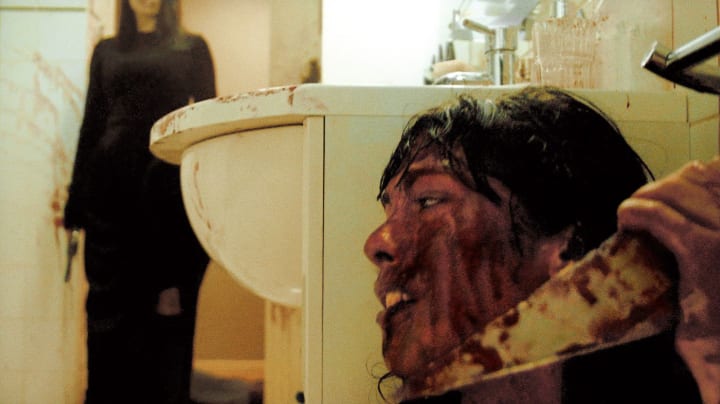
Photo from Bloody Disgusting
Remember how I said In My Skin didn't seem like it was totally a part of the New French Extremity?
Well, now I welcome you to the film that not only is totally a part of the New French Extremity, but is also the unequivocal epitome of that entire movement, and the high watermark (or, more fittingly, high blood mark) by which all other ultra-violent horror movies should be judged.
Welcome to the cavalcade of horrors that is... Inside.
To give you an idea of just how monumentally gore-tastic this masterpiece of plasma production truly is, allow me to relay to you the following FUN FACT:
I showed this film to a friend of mine a couple of years ago, as we are both avid horror fans, and she is a seasoned enough veteran of the genre to not be scared or grossed out very easily. The most hardcore horror film she'd ever seen that truly got under her skin was Wolf Creek.
And then I presented her to my DVD copy of Inside.
And she was — as the kids say — SHOOK.
And really, if you ever do see the film, I doubt you'd blame her.
(Oh, and another FUN FACT: the film's end credits give a "special thanks" mention to Sam Raimi, of The Evil Dead and Drag Me To Hell fame, which is probably the biggest clue as to this film's genre aspirations as you're going to get.)
Combining nail-bitingly suspenseful, expertly calibrated ratcheting up of unbearable tension, visceral violence so jaw-droppingly blood-drenched that it makes the bathroom sink scene in 2017's It look like a pinprick, and a plot that ostensibly starts as a psycho-killer thriller, before evolving into a bizarrely moving melodrama of Greek tragedy proportions (with a final image that is as profoundly poignant as it is utterly horrific), Inside may be an acquired taste... but for those who think they can handle it, it is well worth seeking out.
(Unfortunately, as was inevitable because nothing is sacred, there has already been an English-language remake of Inside produced and shot in 2016, which is only now getting released on VOD in 2018. Made by the people who produced the original Spanish •REC movies (that themselves got American updates as the Quarantine series), the remake stars Rachel Nichols (from Continuum and Criminal Minds) in the role Alysson Paradis originally played, and Laura Harring (from goddamn Mulholland Drive) in the role Béatrice Dalle originally played. By all accounts, this remake is (unsurprisingly) rubbish. But then again, the French directors of the original Inside - Alexandre Bustillo and Julien Maury — made the universally panned Texas Chainsaw Massacre prequel, Leatherface, just last year, so they're clearly not immune to making pure shite, either...)
6) 'Kill List'
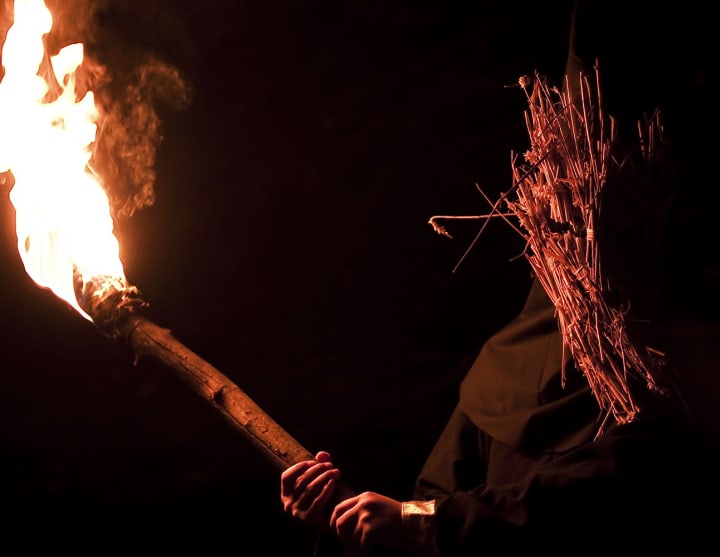
Photo from IMDb
A domestic kitchen-sink drama. A black comedy. A hitman thriller. An occult horror.
Kill List is all of these things at once, and director Ben Wheatley juggles these shifting tones and genres with effortless skill, successfully taking what should by all rights be a multitude of different types of movie, and making them all be of a piece, where each element is intrinsically linked with the other.
In fact, these wildly contrasting tones only help in adding to the pervasive cloud of intangible dread that hovers over every frame of the film, aided by Wheatley's methodical editing, and Jim Williams' bone-rattlingly creepy soundtrack, altogether knocking everything we see on screen off-kilter in such a way that everything just feels strange and wrong, and it will all only get much, much worse as the story progresses.
7) 'Kairo' (a.k.a. 'Pulse') [2001]

Photo from IMDb
Words cannot convey just how much I am still not over how chest-tighteningly petrified Kiyoshi Kurosawa's Pulse made me the first time I watched it.
Trading in existential themes of isolation, despair, loneliness, and depression in an age where computers should bring us closer together, Pulse uses the supernatural element of literal ghosts in the machine to touch upon how technology can drive us apart, and leave us feeling more hollow and alone than we ever might have felt before.
But if those extraordinarily heavy themes weren't horrific enough on their own, Kurosawa then applies his evil genius directorial skill to conjuring up a nightmarish world of all-consuming malevolence and terror so thick, you can almost feel yourself choking on it. His eerily patient, long, unbroken takes... his deep focus staging that utilises the horrible depth of every space he films to keep you on edge... his minimal use of music... and his vision of these ghosts as slow, ambling, silhouetted creatures of endless black void that move as if through water...
...it scares the bejeezus out of me even thinking and writing about it.
In short:
Pulse is one of the scariest movies I have ever seen.
(The original 2001 version, mind you; not the atrocious 2006 American remake. Because, as we have established, these English-language remakes are almost always complete poop.)
8) "Starry Eyes"
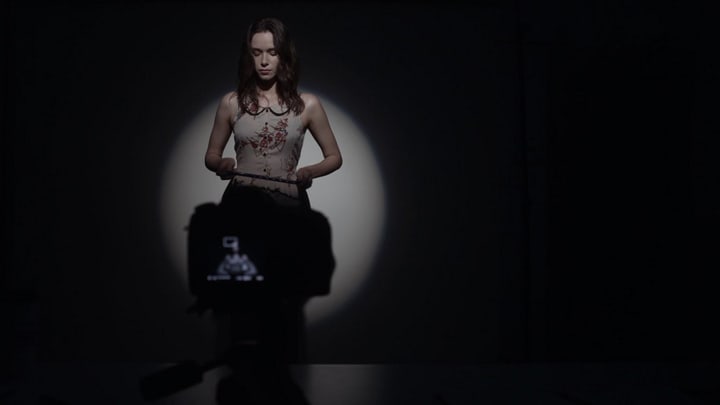
Photo from IMDb
As a stylised synth-scored retro throwback horror flick, that uses the cutthroat dog-eat-dog showbiz culture of LA as a means to tell a tale filled with extravagant Grand Guignol viscera, and witchy occultism, Kevin Kölsch and Dennis Widmyer's Starry Eyes is like if Nicolas Winding Refn's The Neon Demon was actually... y'know... good.
But as a bleak, satirically exaggerated (though not that exaggerated) depiction of male Hollywood elites treating actresses (and women in general) as disposable commodities, abusing their unfathomable power and influence to objectify, humiliate, and sexually assault without impunity or consequence?
In a post-Weinstein world, now more than ever, Starry Eyes is a frighteningly relevant, darkly twisted fairy tale that's horrifying in ways that extend far beyond the grisly metamorphosis body horror, and the astonishingly brutal violence of the third act.
(PRO TIP:Do. Not. Buy. Dumbbells.)
9) 'The Blackcoat's Daughter' (a.k.a. 'February')
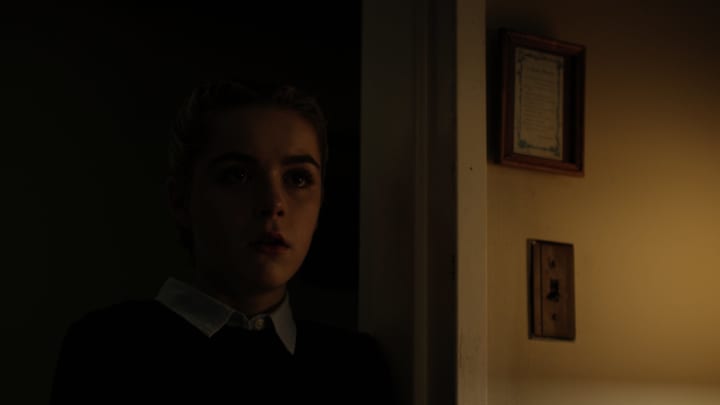
Photo from IMDb
A PSA about The Blackcoat's Daughter:
This is a film you need to watch twice, before you can fully determine if you liked it or not.
The first time I watched it, I was left feeling empty and dissatisfied, with the pithy one-sentence review I had rattling around in my head saying:
"Like a fart in a windowless room, The Blackcoat's Daughter is nothing more than empty-but-noxious atmosphere, which doesn't even have the decency to be truly full of shit."
And yet... the film lingered in my memory, imagery and dialogue and overarching storylines flitting around my brain, urging me to re-watch it, because there was the seed of an idea left behind that said that there was more to the film than I had given it credit for.
So, I watched it a second time, later on that selfsame day.
And... well... my first impression was wrong.
Writer/director Oz Perkins (who every reviewer is obligatorily compelled to mention is the son of Anthony Perkins from Psycho) plays a cunning and dangerous game with his debut feature, holding all the proverbial cards of the simple-but-powerful plot close to his chest for as long as he possibly can, throwing the audience off balance by keeping them at arm's length with the chilly, claustrophobic, suffocating atmosphere he creates using methodically mannered and precise staging and shooting, unnaturally clipped dialogue, relatively glacial pacing (not, like, Andrei Tarkovsky-levels of meditatively slow, but slower than your average horror/thriller), and a stomach-churningly discomforting score by his brother, Elvis Perkins.
On first viewing, it may seem as though the latterly-mentioned Perkins's soundtrack is the only source of true disturbingness in the film, which itself seems to be nothing more than an unholy mash-up of The Wicker Man, Suspiria, The Witch, and the previously listed Kill List, but with none of those films' substance.
But on repeat viewing, you see the Prestige-type trick Perkins had been playing the whole time — misdirecting you with what you thought were meaningless atmospherics, while hiding in plain sight the subtle hints and clues and glances that reveal he was in control all along, weaving a deeply spooky, and unexpectedly moving fable of loss, grief, and trying to return to a past that's already long gone.
(Oh, and Kiernan Shipka is positively downright chilling in her role in this. If she plays Sabrina the Teenage Witch in any remotely similar way to her character in The Blackcoat's Daughter, then consider me already hiding behind the sofa...)
10) 'The Girl With All The Gifts'
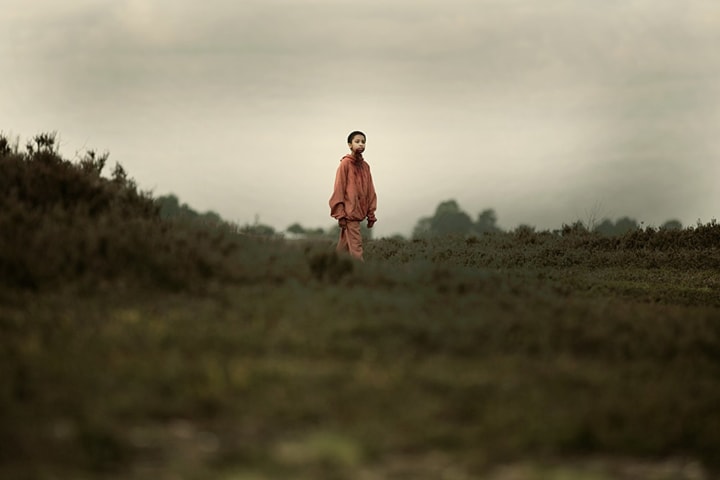
Photo from IMDb
Tired of The Walking Dead's endlessly repetitive storylines, and the cynically manipulative killing-off of characters just for the "shock" and the ratings? Wishing you could watch something that recaptures the reasons you loved zombie horror in the first place?
Then you just might be looking for The Girl With All The Gifts!
Written by M.R. Carey, adapting his original bestselling novel (and, in the process, making that rare beast of a film that's actually better than the book it's based upon), and directed by TV veteran Colm McCarthy (who's directed episodes of everything from Spooks, The Tudors, and Ripper Street, to Sherlock, Doctor Who, Black Mirror, and the entire second series of Peaky Blinders), the plot of The Girl With All The Gifts centres around a young girl named Melanie (played by Sennia Nanua, in a remarkable debut performance), who is one of many children kept prisoner in an underground military facility, in a post-apocalyptic Britain that's overrun with zombies created by a deadly mind-and-body-consuming fungus-type infection (of a sort not completely dissimilar from the zombies in The Last Of Us). The facility is ruled with an iron fist (no, not that Iron Fist) by Paddy Considine's Sergeant Parks, and routinely visited by Glenn Close's steely-eyed Dr. Caldwell (whose character is the most improved-upon in the book-to-film transition, seeing as book-Caldwell is impressively dumb for a genius scientist). The only symbol of hope presented to the imprisoned Melanie is Gemma Arterton's Miss Justineau, who is the only person who treats the children as human beings.
If you've not read the book or seen the film yet, I shan't spoil it any further. Suffice it to say that McCarthy's stylishly confident direction makes the film's £4 million budget look like a blockbuster with 10x that amount, crafting heart-poundingly violent and suspenseful action scenes, and creating a unique in-universe mood that finds elegiac beauty within the surreal sci-fi/horror settings.
And irregardless of everything else, you should watch The Girl With All The Gifts at least once just to hear the guttural, ethereal, overwhelmingly awesome score by Cristobal Tapia de Veer (whose equally distinctly memorable soundtracks for Humans, National Treasure, and the sorely-missed Utopia, mark him as one of my favourite composers working today).
11) 'The Poughkeepsie Tapes'
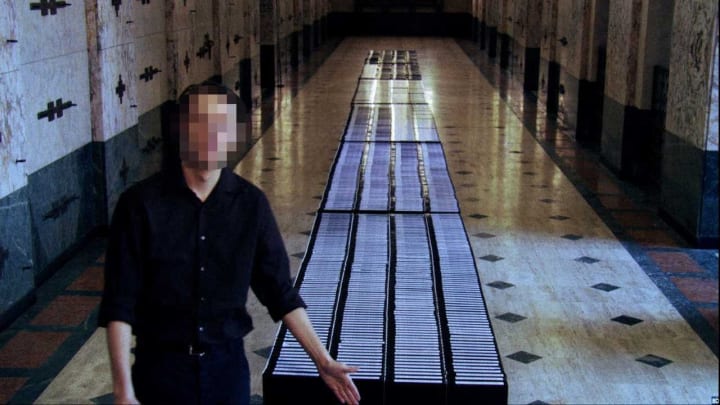
Photo from Bloody Disgusting
There's something about analogue technologies (paper books, vinyl records, old film, and video tapes) that lend themselves so well to horror in a way that 21st century purely digital facsimiles just can't replicate the feeling of. The Evil Dead wouldn't work if the Necronomicon was on a Kindle; Sinister wouldn't be nearly as effective if the Mr. Boogie films were QuickTime files; and 75% of allhorror movies that have ever used broken/scratched/skipping vinyl sound effects to create atmospheric unease would be completely screwed if they only used perfectly clean MP3 tracks.
It's like with this article's introduction's briefly-referenced example of Rings, which tried to update the famous cursed Samara videotape into a digital, online, (literally) viral video, but in the process failed to retain the 2002 Gore Verbinski Ringu remake's* scariness... although that's also down to Rings's stupid plot, bad writing, and wooden acting, so it was a no-win situation.
The point of all this lyrical waxing about digital vs. analogue totems, that act as any given horror movie's source of plot-contingent evil, is that John Erick Dowdle's faux-documentary/quasi-found-footage horror/thriller, The Poughkeepsie Tapes, invaluably gains an enormous amount of its spine-tinglingly disturbing memorability from the eponymous tapes having the grubby, grainy, crackling audio and visual quality of VHS technology, lending the tapes a gnarly snuff film aesthetic that makes the story of this dark mockumentary feel all the more horribly plausible.
Presented (with commendable attention to detail) as an A&E or Investigation Discovery-type true-crime doc, The Poughkeepsie Tapes is a chronicle of the police's years-long investigation into — and hunt for — a serial killer who came to be known as "The Water Street Butcher". Interspersed with the expositional talking-head interviews with law enforcement, and the victims' families, are snippets from the 800 tapes of the killer's own twisted footage of his crimes, which he left behind for the police to find, and to watch.
The scenes featuring the killer's footage are...
...phew, boy, I'm not sure I have the words to describe them.
What's remarkable about these found-footage scenes is that what makes them so profoundly pulse-pounding isn't that there's a preponderance of blood or gore (because there isn't). No, it's the sheer intensity... the strangeness... the psychological terrorisation... and the sadistic theatricality of the scenes he stages... that's what is deeply, deeply fucked up.
Remember that old tagline for Wes Craven's The Last House on the Left?
"To avoid fainting, keep repeating: It's only a movie... it's only a movie... it's only a movie"?
While the prospect of fainting is unlikely, still... if ever there was a film worthy of you needing to remind yourself that it is only a movie... The Poughkeepsie Tapes would certainly make for a persuasive candidate.
12) '30 Days of Night'
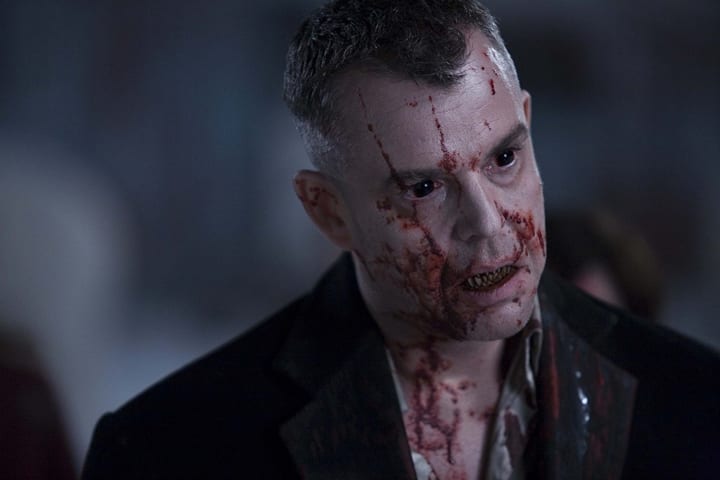
Photo from IMDb
A year before Twilight made vampires beautiful, mopey, and sparkly... and a few years before this listed film's director surprisingly went and shot the third Twilight film, Eclipse...
...David Slade's 30 Days of Night (produced by Sam Raimi, and based on the graphic novel by Steve Niles and Ben Templesmith) made vampires actually monstrous again —-mouths filled with rows of razor-sharp fangs, black eyes like hungry sharks, an inhuman language from the bowels of Hell, and altogether feral and messy predators that spill and spray as much blood as they drink.
Not only that, but thanks to the far-north geography of the small Alaskan town at the centre of the film's vampire occupation, the winter sun is set to be... well... set for an entire month, allowing the nocturnal beasts 30 days of night (Ron Howard voice:"Hey, that's the name of the show!") to roam free, unencumbered by a new dawn, and go merrily a-pillaging on the human buffet left out for them.
A sterling cast (including Josh Hartnett, in one of the few high-profile roles we'd see him in before Penny Dreadful; Melissa George, who we don't see nearly enough of these days; Ben Foster, leaving a big creepy-as-fuck impression with a minor creepy-as-fuck character; and Danny Huston, who was born to play villains in basically everything).
A collective crew who would go on to do even greater things, both together and apart (with Jo Willems DOP-ing the last few Hunger Games films; composer Brian Reitzell (whose score here is magnificently metal, in every sense of the word) soundtracking the video games Dead Rising 3, Red Faction: Armageddon, Watch Dogs, and the short-lived Starz TV series, Boss; and director David Slade doing episodes of Breaking Bad and Black Mirror, plus establishing the visual styles of Bryan Fuller's shows, Hannibal and American Gods, with Reitzell in tow as the composer and music supervisor for both).
Simply put, it's an A-grade B-movie of the highest pedigree.
13) '1408'
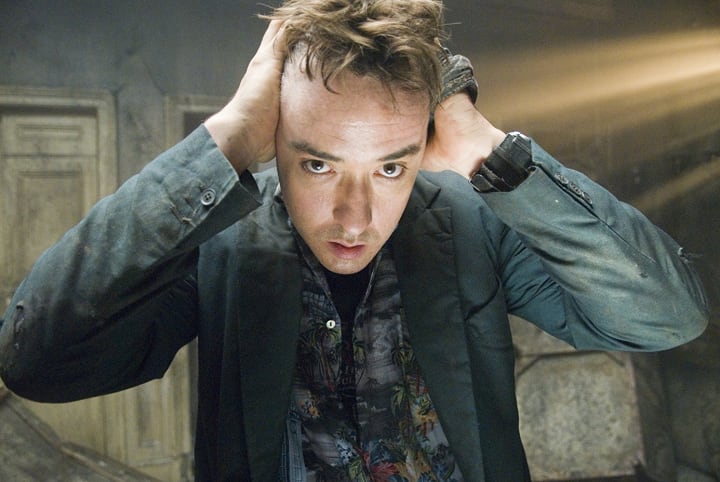
Photo from IMDb
And finally, last but not least:
I would be remiss if I didn't include at least one Stephen King adaptation.
(Well, one of the good ones, anyway.)
So, here now do I present to you 1408 — a.k.a. the film with the title whose numbers were literally chosen by King to add up to 13, because he's a noted triskaidekaphobic, and almost nothing scares him more than that number.
Directed by Mikael Håfström (who is not to be confused with (as my stupid brain had thought) Mikael Salomon, who also happened to direct a couple of adaptations of King's work, but for TV instead (with 2004's Salem's Lot, and 2 episodes of Nightmares & Dreamscapes)), the story of 1408 revolves around John Cusack's Mike Enslin — a surly, cynical paranormal investigator who doesn't believe in the supernatural things he writes his books about.
(A writer in a Stephen King story?! Well, I never!!)
But then, he gets a tip about the Dolphin Hotel, which houses a room with a long and storied history as being a hotspot of extreme negative energy, malevolence, and unexplained phenomenon that affects all who enter it, no matter how long or short their stay may be.
This... is Room 1408.
(Obviously.)
However, before Cusack can stay in the room to debunk it, he must first go through a thorough dressing-down and mortal warning from the subtly suspicious hotel manager, Mr. Olin (played with great relish and quiet menace by Samuel L. Jackson).
What follows after that tense, extended expository meeting, is a sustained one-man/one-room show for almost the entire second and third acts of the film, Cusack delivering one of the best performances of his entire career — not to mention one majestically over-the-top (but completely understandable) freakout that rivals anything in the oeuvre of Freakout King (and fellow Con Air cast member), Nicolas Cage — as he reckons with the mind-bending, reality-twisting, insidiously tortuous insanity of that unholy room.
In conclusion:
Watch 1408 (and any of the other 12 movies listed herein) at your peril...
THE END.
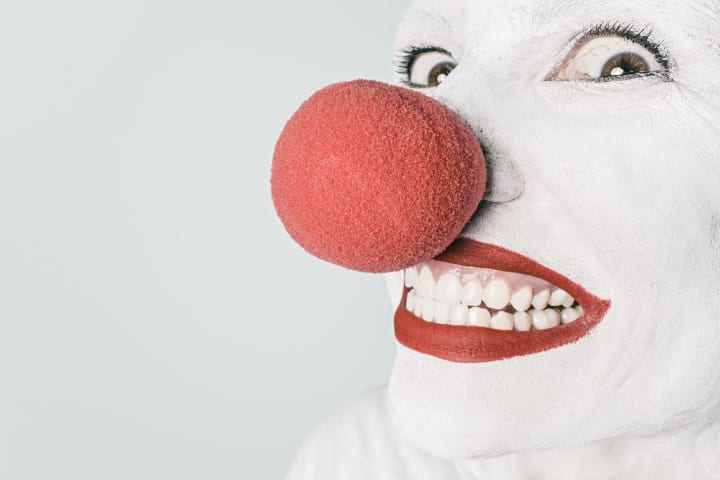
Photo by Gratisography on Pexels






Comments
There are no comments for this story
Be the first to respond and start the conversation.